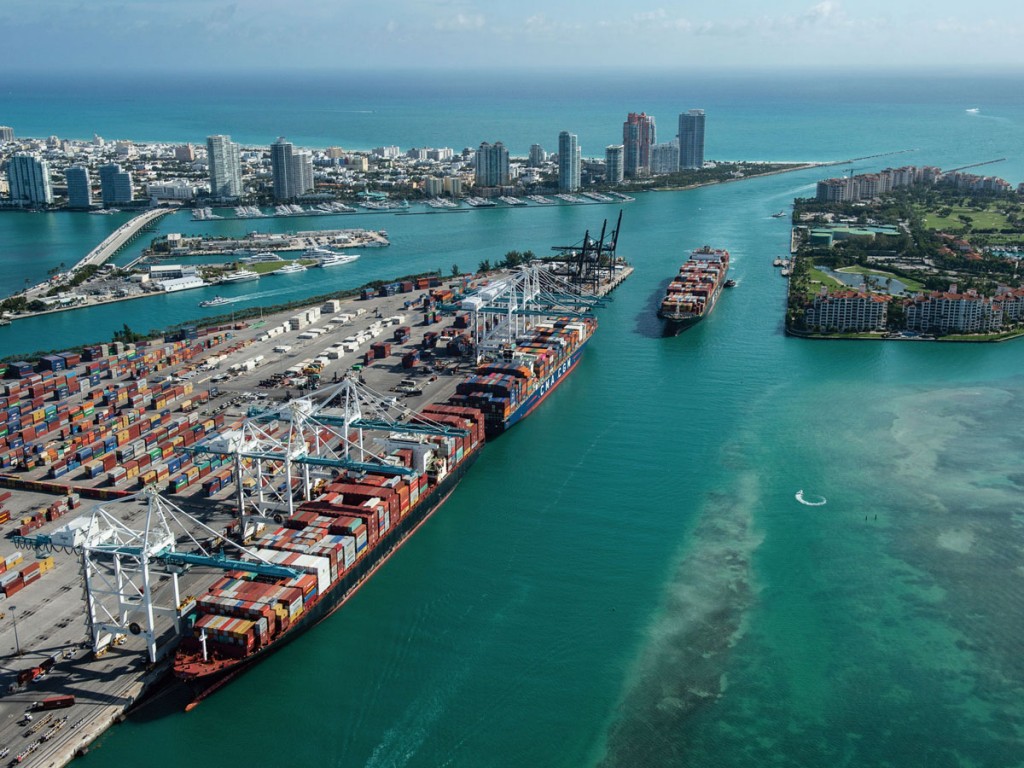Timing is everything, as the proverb goes, and South Florida’s PortMiami is proving the adage aptly applies to its blossoming maritime trade with Asia.
With foresighted completion of more than $1 billion of capital projects – highlighted by a deeper ship channel and additional super-sized cranes – the Miami-Dade County seaport boasted ability to efficiently accommodate megacontainerships by the time the expanded Panama Canal opened for traffic in mid-2016.

“For four consecutive years, Miami has surpassed the 1 million TEU mark,” said Juan M. Kuryla, port director and chief executive officer of PortMiami. “We attribute the growth to deployed infrastructure improvements and a strong balance of global trade.
“We anticipate another record year,” Kuryla said of the 12 months ending this coming Sept. 30, adding, “We anticipate continued growth for years to come.”
Kuryla noted that PortMiami already has welcomed more than 300 post-Panamax vessels requiring a draft of 39 feet or more that could not have called without the deeper channel and additional big cranes. Further navigational channel improvements are now under federal study, and port officials are looking to add even more super-post-Panamax gantries.
In addition to the channel and crane enhancements, PortMiami was prepared for the Panama Canal expansion with completion of a direct tunnel link to the Interstate highway system and upgraded on-dock rail facilities. Both of those developments help considerably in proficient movement of container volume surges generated by the megavessels deployed by global ocean carrier alliances.
And Kuryla pointed out that the port and its cargo partners continue to make significant infrastructure investments.
Seaboard Marine last year opened a new 15,000-square-foot maintenance and repair building, and, in July, an $8 million federal grant was announced to bring further improvements to Seaboard Marine’s terminal.
Early this year, South Florida Container Terminal launched a cargo yard densification project to increase its operational capacity and container throughput, while Port of Miami Terminal Operating Co. continues its investments in new container-handling equipment and technological capabilities.
PortMiami’s Asia trade is dominated by imports from China, which in fiscal 2018 reached a total value of more than $2.6 billion, up nearly 14 percent from just two years earlier. Key imports from China include electronic goods, machinery, furniture, plastic items, toys and games, leather goods and footwear. By comparison, exports from PortMiami to China totaled less than $118 million in fiscal 2018.
The Miami port’s trade with Japan ($174.8 million in imports and $32.1 million in exports in fiscal 2018) and South Korea ($147.7 in imports and $46.3 million in exports), while certainly substantial, is overshadowed by the China activity.




